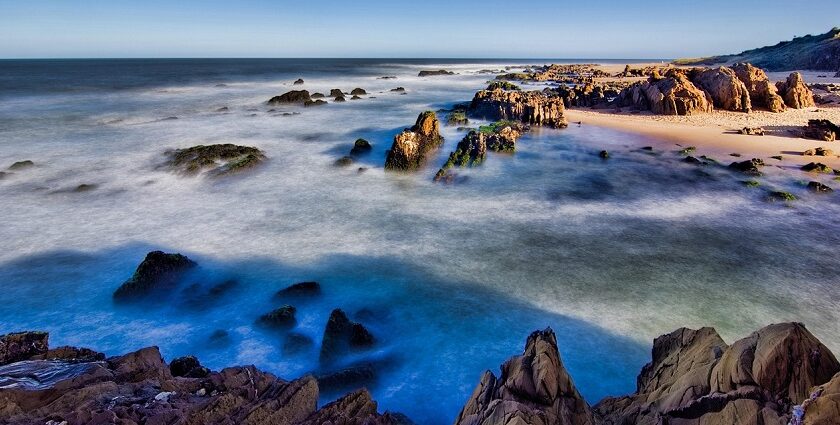The things to do in Uruguay include walking through cobbled streets in Colonia del Sacramento, watching waves crash at Punta del Este, and soaking in hot springs near Salto. You can enjoy street murals, Carnival shows, vineyard lunches, and coastal hikes without long travel hours. Each place offers something historic, wild, or quietly beautiful. Montevideo gives you art, food, and music in one sweep, while Rocha takes you off the grid completely. If you are looking for variety, culture, and calm in one trip, the things to do in Uruguay easily match every pace and preference.
Top 10 Things To Do In Uruguay
From coastal towns to inland retreats, the things to do in Uruguay give you a mix of nature, culture, history, and easygoing moments in every region.
1. Explore Ciudad Vieja
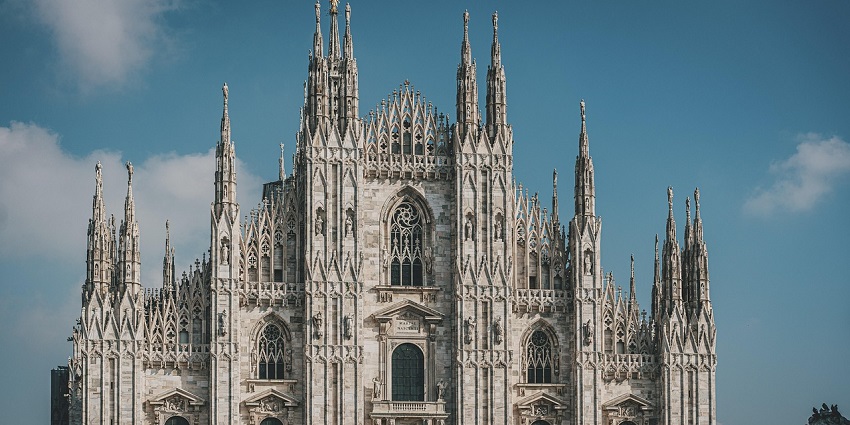
Photo: Antonio_Cansino / Pixabay / Image For Representation Only
The things to do in Uruguay begin strongly with Ciudad Vieja, Montevideo’s oldest district and the heartbeat of the capital. Here, you walk past 18th-century buildings that still function as antique shops, art galleries, and classic cafés. The area is centred around Plaza Matriz, home to Montevideo’s first cathedral and charming book stalls. You’ll find street performers near the old city gate, and the sound of tango often drifts through the air from nearby bars. Calle Sarandí runs straight through the quarter, lined with murals, sculptures, and craft stalls. At the far end, the Mercado del Puerto is the spot to try local grilled meats and sip Tannat wine.
Location: Montevideo
Timings: 24*6
Average Cost: $3 – 6 / ₹260 – 520
Nearby Attractions: Museo Torres García, Mercado del Puerto, Plaza Matriz
2. Relax At Punta Del Este Beaches
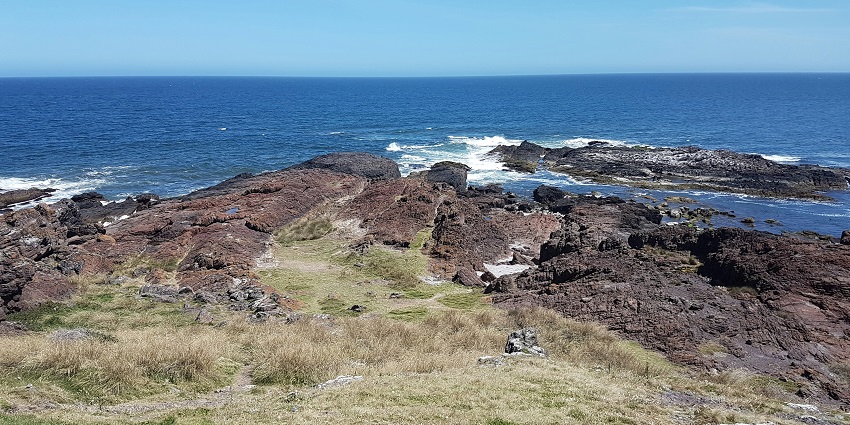
Photo: Alex Teixeira / Unsplash
Punta del Este’s beaches are part of what makes the things to do in Uruguay so diverse. On one side, Playa Brava brings crashing Atlantic waves and the striking concrete fingers of “La Mano,” a sculpture that marks the coastline. Just across the peninsula, Playa Mansa offers calmer waters where you can swim or kayak with city views in the background. The beach scene changes through the day, from quiet morning walks to bustling afternoons filled with food vendors and music. In summer, beach clubs like OVO and Moby Dick bring nightlife right to the water’s edge.
Location: Punta del Este
Timings: 24*7
Nearby Attractions: La Mano, Punta del Este Lighthouse, Casapueblo
3. Tour The Casapueblo Art Museum
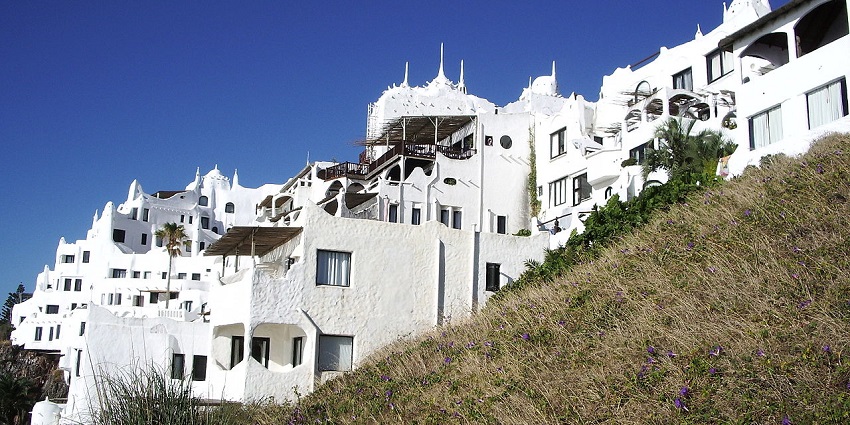
Photo: Talkingheads / Wikimedia Commons
One of the most distinctive things to see in Uruguay is a visit to Casapueblo, a whitewashed, cliffside structure built by Uruguayan artist Carlos Páez Vilaró. It overlooks the sea and is designed like a living sculpture. Every hallway, staircase, and terrace curves in unexpected ways, mimicking Mediterranean coastal homes with local flair. Inside, you can explore galleries filled with the artist’s colourful paintings, ceramics, and murals, each room retaining his original arrangement. At certain hours, a recorded poem by Vilaró is played as the sun sets over the ocean, creating a striking atmosphere.
Location: Punta Ballena, near Punta del Este
Timings: 10 AM – 6 PM
Average Cost: $12 / ₹1030 (entry)
Nearby Attractions: Playa Las Grutas, Arboretum Lussich
4. Visit Colonia Del Sacramento Historic Quarter
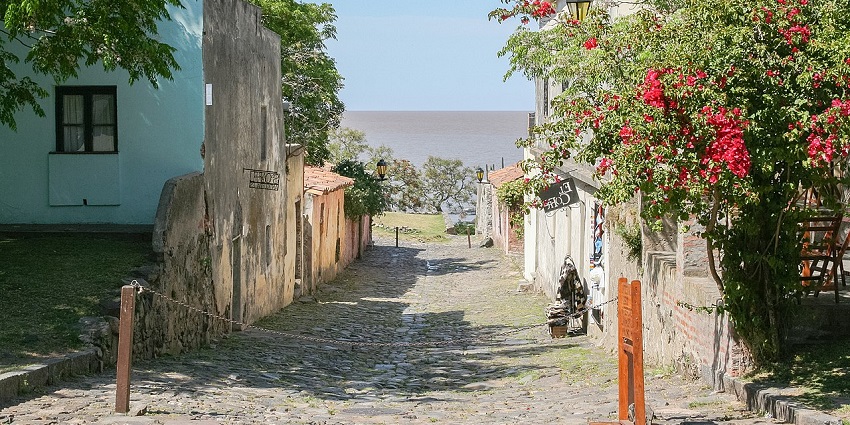
Photo: Diego Delso / Wikimedia Commons
One of the most historically significant sites to explore when planning what to do in Uruguay is the old quarter of Colonia del Sacramento. Founded by the Portuguese in 1680 and later contested by the Spanish, the mix of influences is clear in its architecture and layout. Enter through the Portón de Campo gate, then walk cobbled streets like Calle de los Suspiros. Visit the lighthouse for coastal views and explore small museums and preserved homes. The area feels lived-in yet historic, offering a grounded view of Uruguay’s colonial past.
Location: Colonia del Sacramento
Timings: 11:30 AM – 4:30 PM (museum)
Average Cost: $2 – 5 / ₹180 – 430 (museum pass)
Nearby Attractions: Lighthouse, Basilica of the Holy Sacrament, Rambla Costanera
5. Enjoy Wine Tasting In Canelones
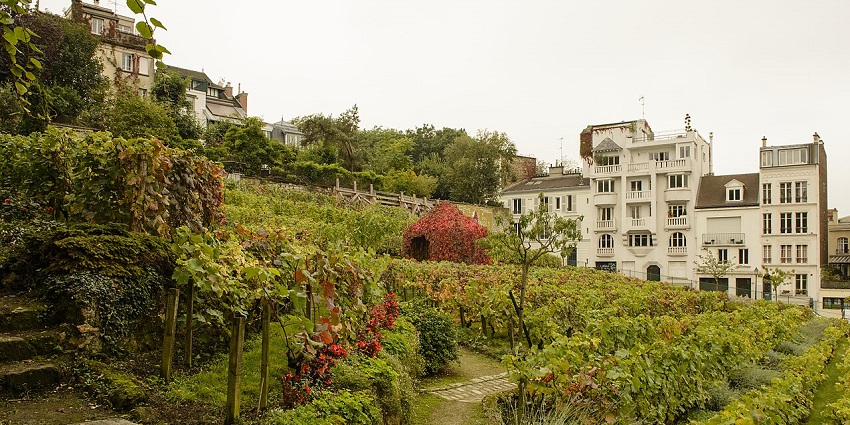
Photo: Son of Groucho / Wikimedia Commons / Image For Representation Only
Canelones is Uruguay’s top wine-producing region, located just outside Montevideo. Its vineyards stretch across flat farmland and are often run by families who’ve been in winemaking for generations. Many estates offer intimate tastings led by the owners, with tours through barrel rooms, cellars, and vine-covered fields. Tannat, Uruguay’s signature grape, is widely grown here, along with Merlot and Albariño. Wineries like Bodega Juanicó combine old and new methods. You’ll sample small-batch wines with local cheeses or cured meats and learn directly from vineyard staff about soil, pruning, and harvest. Some even let guests picnic among the vines.
Location: Wine region near Montevideo
Average Cost: $20 – 50 / ₹1800 – 4500 per tasting tour
Nearby Attractions: Juanicó winery, Castillo Viejo, Viña Varela Zarranz
6. Stroll Along Montevideo Rambla
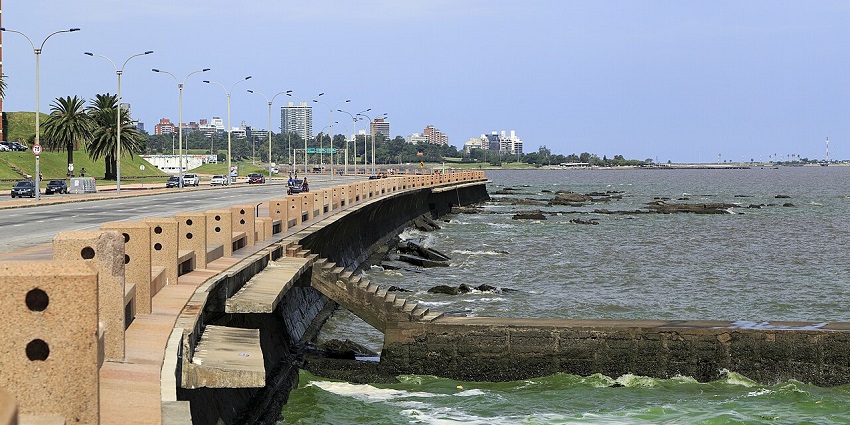
Photo: Falk2 / Wikimedia Commons
Walking along the Montevideo Rambla is one of the most consistent, everyday things to do in Uruguay. The Rambla is a long coastal road that runs for over 20 kilometres, connecting different neighbourhoods along the Río de la Plata. It’s paved for both pedestrians and cyclists, and you’ll see people jogging, fishing, rollerblading, or sitting on the stone walls throughout the day. The section running from Pocitos to Carrasco sees the most activity, especially after midday. People bring folding chairs, play music from portable radios, and share meals along the seawall. Playa Ramírez and Playa Malvín sit along this route and are easy to access on foot.
Location: Montevideo (13-mile coastal road)
Timings: 24*7
Nearby Attractions: Playa Pocitos, Montevideo sign, Parque Rodó
7. Hike In Quebrada De Los Cuervos
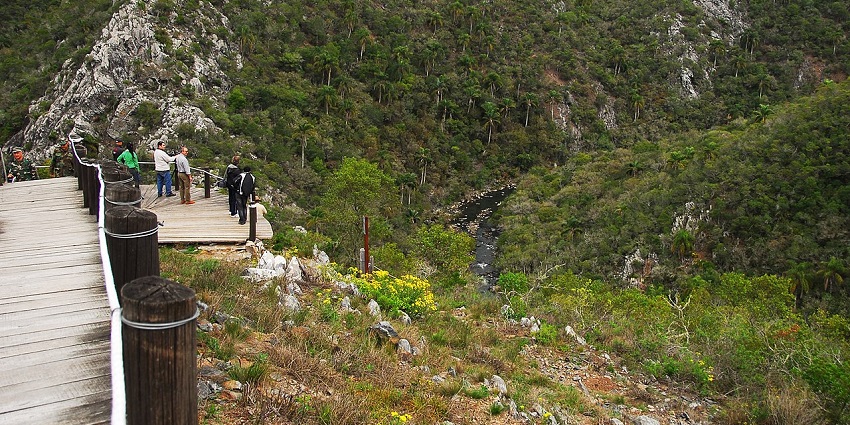
Photo: Andrés Franchi Ugart / Wikimedia Commons
Quebrada de los Cuervos is a protected natural area in Treinta y Tres and one of the few places in Uruguay with a deep canyon ecosystem. The gorge is formed by the Yerbal Chico stream, which runs through a narrow valley bordered by steep rock walls and thick native forest. The walking path starts at a park control post and follows a natural slope into the gorge. Reaching the stream takes roughly 45 minutes on foot. Along the way, you pass native species such as ombú, myrtles, and wild orchids growing in shaded forest zones. There are no artificial walkways or tourist facilities along the trail itself.
Location: Near Treinta y Tres
Timings: 8 AM – 5 PM
Average Cost: $2 / ₹180 (entry fee)
Nearby Attractions: Yerbal Viejo stream, scenic viewpoints, native forest trails
8. Experience Carnival At Teatro De Verano
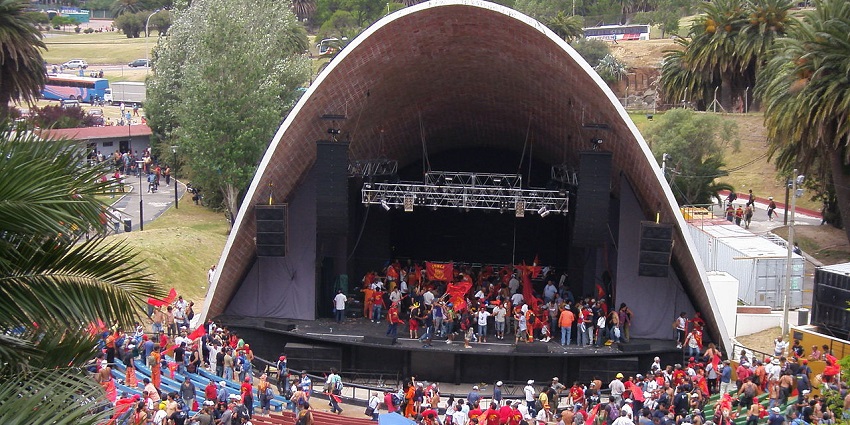
Photo: Barbanegra / Wikimedia Commons
Watching a live performance during the Carnival season at Teatro de Verano is one of the most culturally rooted things to do in Uruguay. This open-air theatre is the main stage for Montevideo’s Carnival competitions and performances, running from late January through early March. The theatre has over 4,000 fixed seats built into a hillside in Parque Rodó. During Carnival, it hosts nightly competitions featuring murgas, parodistas, and comparsas. These groups perform musical theatre with themes based on politics, social issues, or daily life. Each troupe uses coordinated costumes and face paint, and every act includes live percussion and a chorus.
Location: Montevideo
Average Cost: $10 – 25 / ₹860 – 2100 per show
Nearby Attractions: Parque Rodó, Museo del Carnaval
9. Soak In Hot Springs At Termas Del Daymán
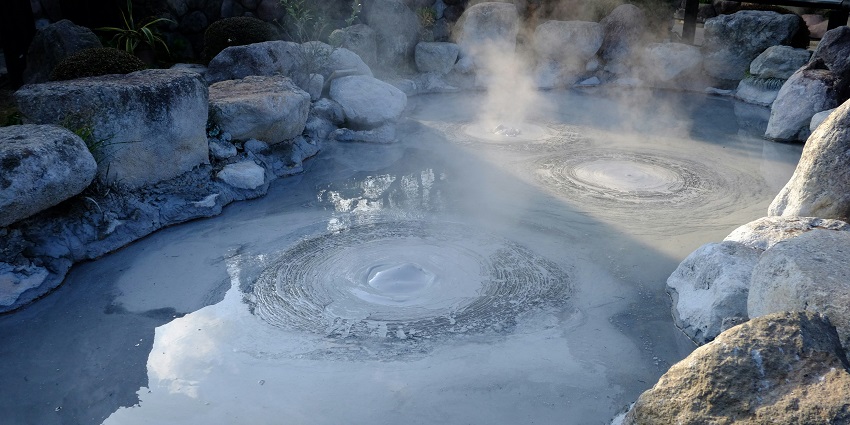
Photo: Ben Lim / Unsplash / Image For Representation Only
Spending a day at Termas del Daymán is one of the most relaxing things to do in Uruguay, especially if you’re looking for geothermal water sources that are open to the public. The complex is located near Salto and contains several outdoor pools filled with naturally heated spring water. Water temperatures in the pools range from 36°C to 44°C. The facility has separate sections, one for general use and others that require additional payment, where features include hydrotherapy jets and quieter bathing areas. The water contains minerals such as calcium and magnesium. If you’re interested in practical wellness experiences, this is one of the things to do in Uruguay, worth building into your trip.
Location: Salto Department
Average Cost: $7 – 10 / ₹600 – 900 per person
Nearby Attractions: Acuamanía Water Park, Río Uruguay, Salto Grande Dam
10. Visit Cabo Polonio National Park
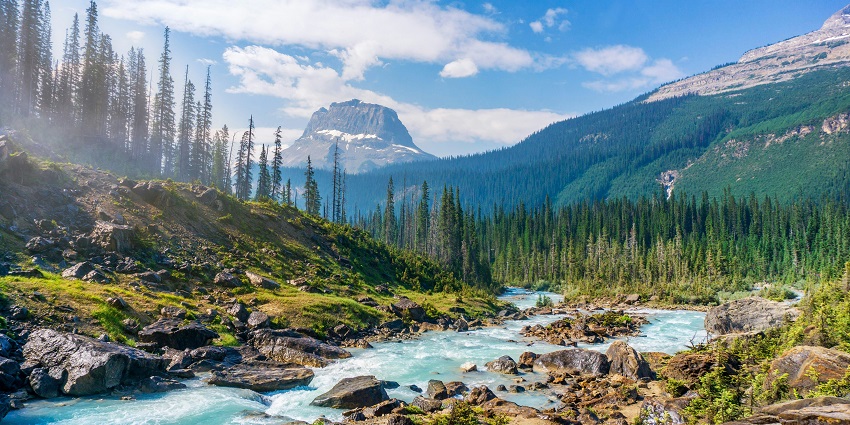
Photo: Hendrik Cornelissen / Unsplash / Image For Representation Only
Cabo Polonio is located within a designated national park and is regulated under protected area status. The Cabo Polonio Lighthouse was built in 1881 and remains active. It is open during the day and offers direct views of the Atlantic coastline and the nearby sea lion reserve. The sea lion population here is among the largest in South America, and the animals are visible from the rocky cliffs near the lighthouse. There are no paved roads, and commercial activity is limited to small food stalls, hostels, and informal shops. Among the more isolated things to do in Uruguay, this destination is shaped entirely by its environment.
Location: Rocha Department
Timings: 9 AM – 6 PM
Average Cost: $10 – 12 / ₹900 – 1000 for entry and transport
Nearby Attractions: Lighthouse, Sea Lion Reserve, Dunes of Barra de Valizas
The things to do in Uruguay are rooted in everyday culture and natural beauty. From wandering colonial streets and tasting bold Tannat wines to hiking native forests or soaking in hot springs, each activity reveals a different layer of the country. These aren’t just attractions—they’re part of local life. Plan your journey today with TripXL to explore Uruguay meaningfully, one authentic experience at a time.
Cover Photo: u_7vrou29sbs / Pixabay / Image For Representation Only


 WhatsApp
WhatsApp
 Twitter
Twitter
